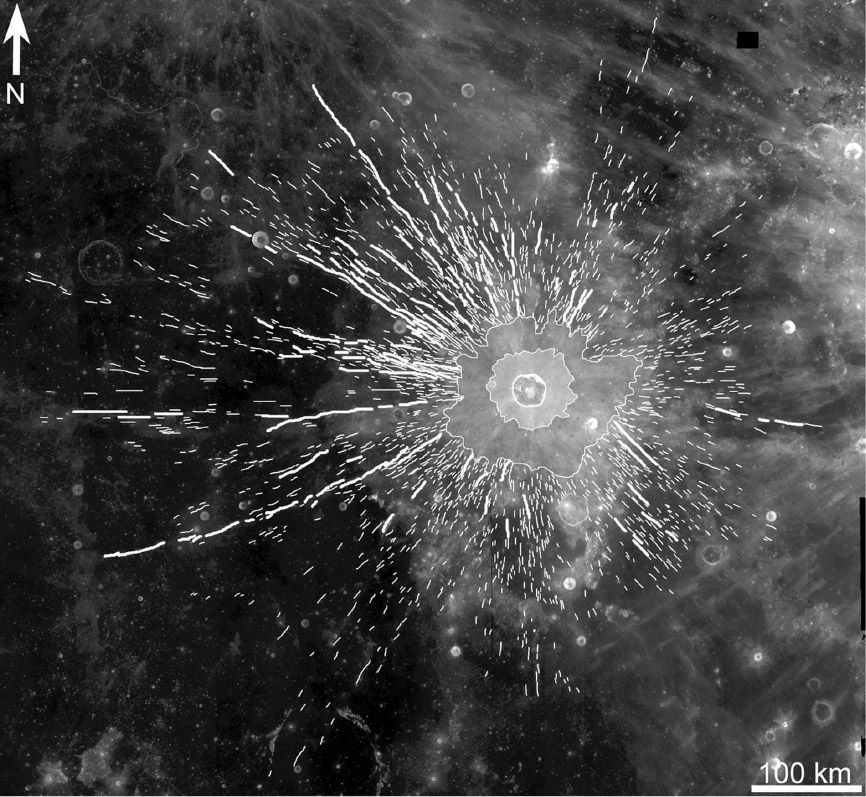March 26, 2012
Kepler Rayology

image from Öhman and Kring (2012) and Journal of Geophysical Research. The inner circle is the rim of Kepler, the next white boundary is the extent of continuous ejecta, and the outer one marks the edge of the discontinuous ejecta, Rays are marked by white lines, thick for the most prominent with fainter rays indicated by thin lines.
I always seem to be on a kick about rays. I continue to point out that although their origin has been understood as ejecta from impact craters since Shoemaker's classic work in the early 1960s, and their brightness is due to youthfulness and composition, that many aspects of rayology are still poorly known. And while we do recognize that obliquity of impact concentrates rays down range or in butterrfly patterns and can create zones of avoidance, we don't understand why rays have the distributions that they do. Why are the rays from some craters quite long (me) conclusion is made that the alignment of ridges with ray gaps may be merely coincidental. This good study reinforces the idea that we still don't adequately understand ray emplacement. A good start would be to do as they did and make ray maps for all the major ray craters. Who is up to doing one?
Chuck Wood
Technical Details
Öhman, T., and D. A. Kring (2012) Photogeologic analysis of impact melt-rich lithologies in Kepler crater that could be sampled by future missions, J. Geophys. Res. 117, E00H08, doi:10.1029/2011JE003918.
Related Links
Rükl plate 30
Yesterday's LPOD: NW Imbrium Tour
Tomorrow's LPOD: Four Moons Over Arkansas
COMMENTS?
Register, Log in, and join in the comments.



